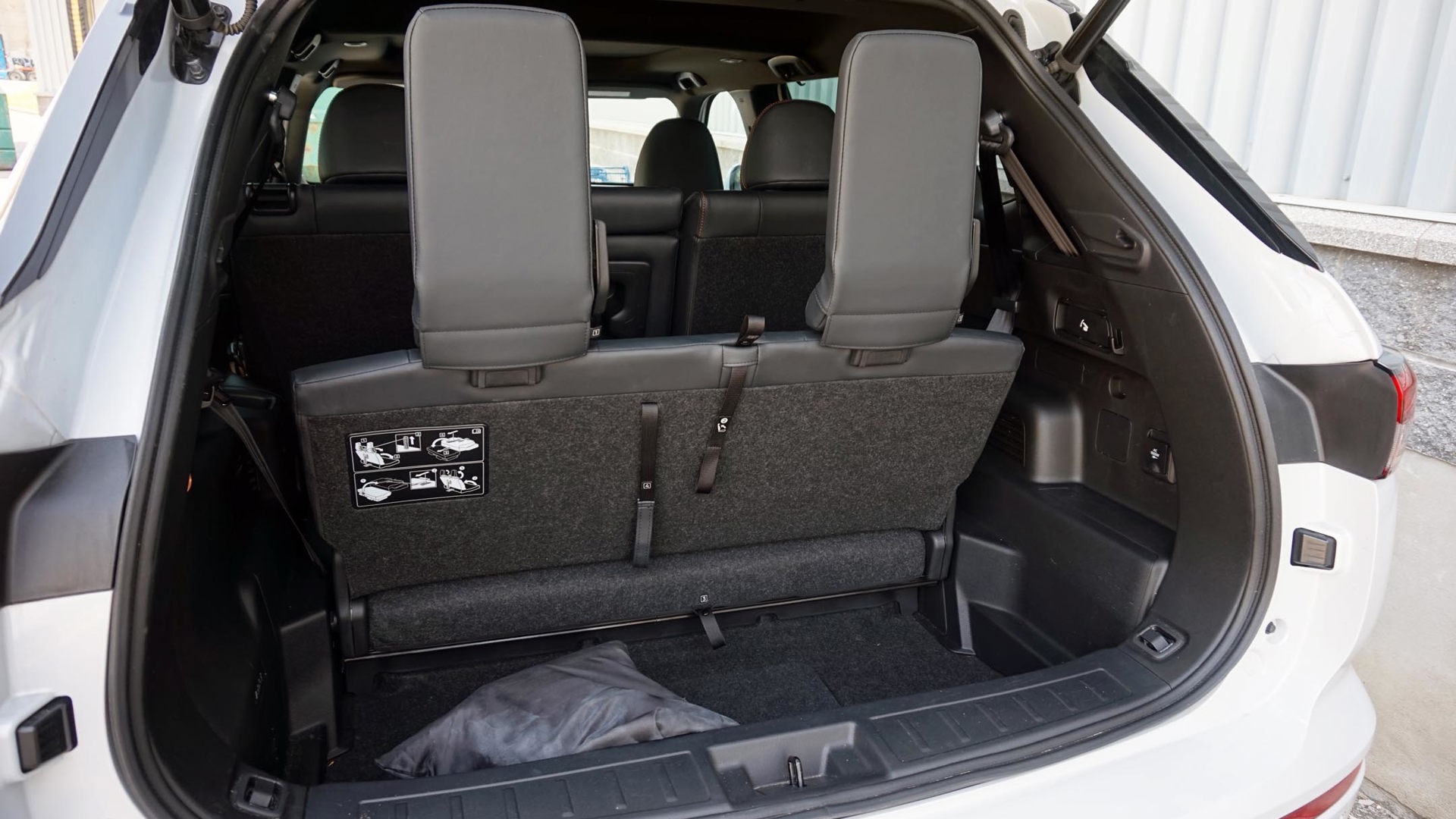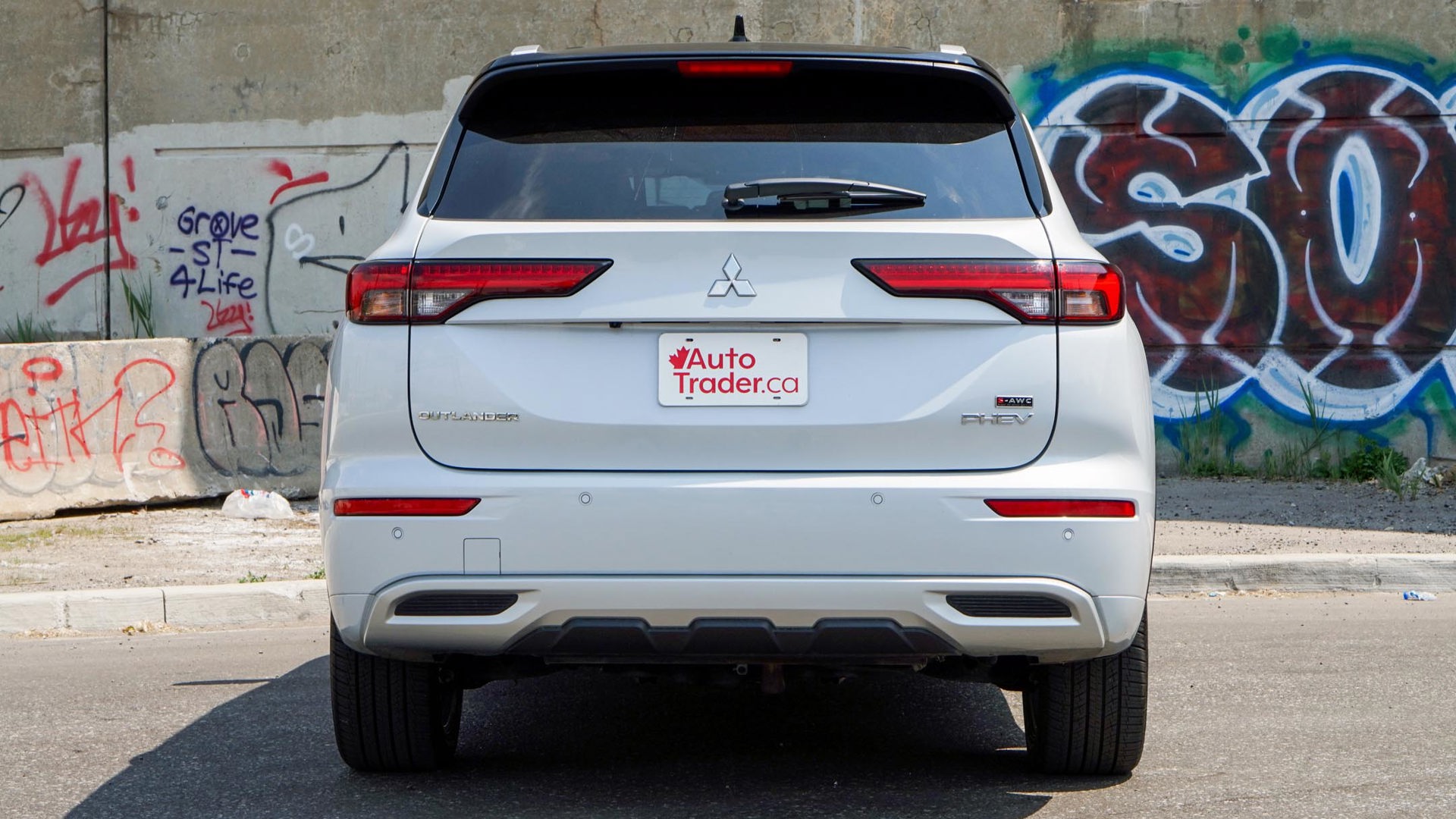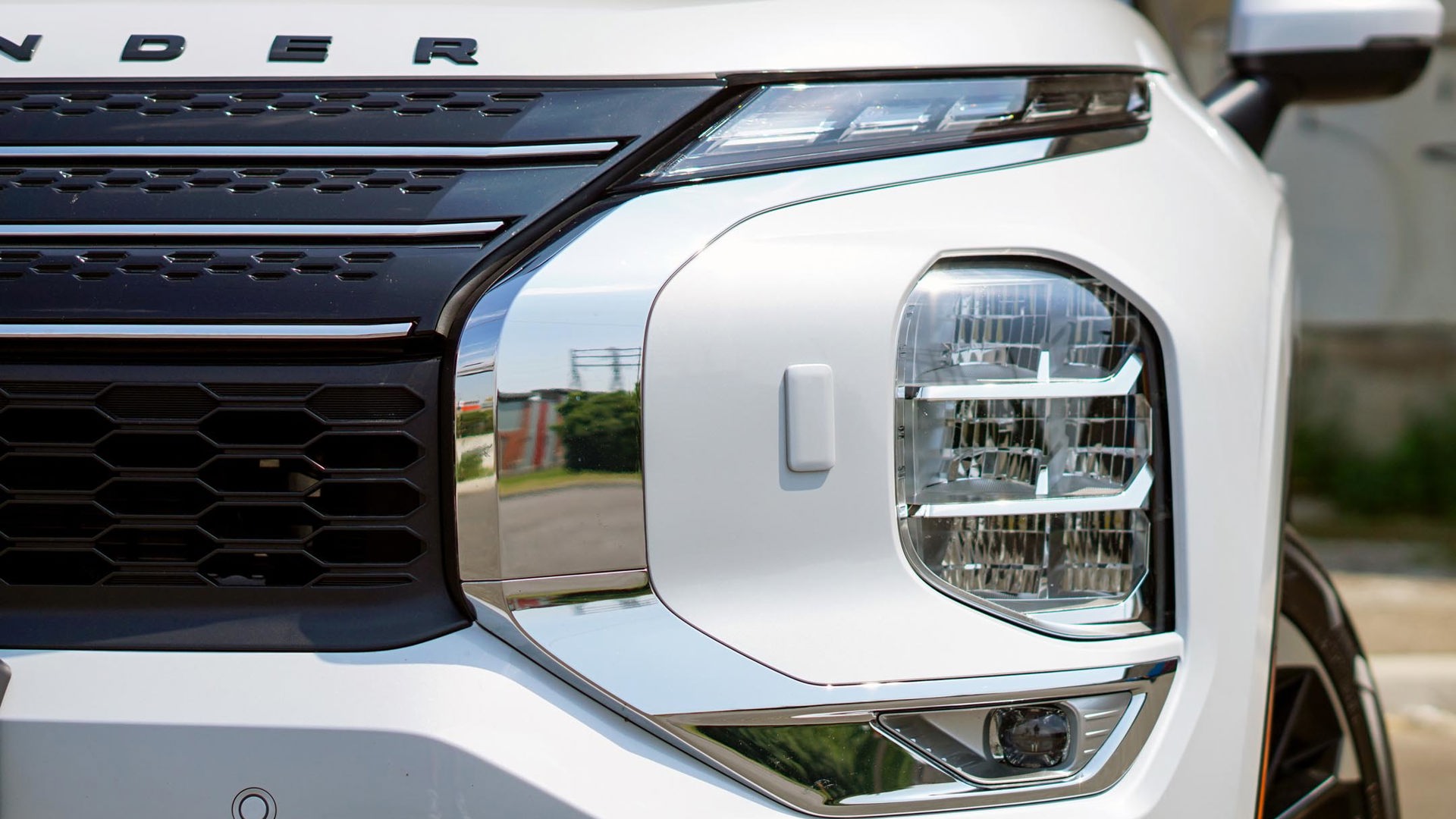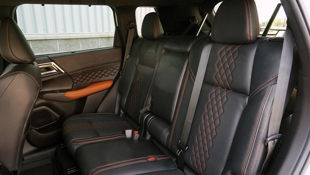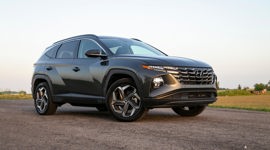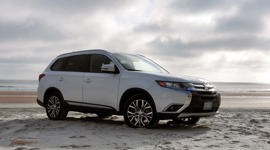 AutoTrader SCORE
AutoTrader SCORE
-
STYLING8/10
-
Safety9/10
-
PRACTICALITY7/10
-
USER-FRIENDLINESS8/10
-
FEATURES9/10
-
POWER9/10
-
COMFORT6/10
-
DRIVING FEEL8/10
-
FUEL ECONOMY9/10
-
VALUE8/10
The 2023 Mitsubishi Outlander PHEV combines the best of the electric vehicle (EV) world with the kind of conventional gas-powered driving we’re already used to.
By making it super easy for a driver to achieve excellent efficiency and banish range anxiety, while also offering all-wheel drive and reasonable practicality, this seven-passenger plug-in hybrid should check a lot of boxes for many Canadian drivers.
Styling: 8.5/10
I personally like the Outlander’s look because it’s unique and makes a bigger statement than the Nissan Rogue it shares a platform with. While there are some details I question, it presents an overall stylish and futuristic look.
Inside, the top trim’s quilted leather seats and contrast stitching keep it interesting and fresh. There are a bit too many materials used (I can do without the fake carbon fibre or the piano black), but Mitsubishi has really improved its interiors, and the Outlander is a great example.
Power: 9/10
The Outlander PHEV is powered by a 2.4L four-cylinder engine with 131 hp and 144 lb-ft of torque. In addition, there is an electric motor on each axle to enable all-wheel drive, with a combined output of 248 hp and 332 lb-ft of torque. One of my main issues with the gas-only Outlander was that the acceleration felt weak, but the PHEV provides ample passing power and can get up to highway speeds much more quickly.
Fuel Economy: 9/10
With its 20-kWh lithium-ion battery pack, the Outlander PHEV is rated to drive 61 km on electricity alone. Drivers can choose whether they want to drive on electric power, with the gas engine only (to save the EV power for later or use the gas engine to charge the battery), or a combination of both. I drove it predominantly in the automatic hybrid setting, which draws on the battery power as much as possible to maximize efficiency.
On its gas engine alone and with the battery depleted, it’s rated to burn 9.2 L/100 km in the city, 8.7 on the highway, and 9.0 combined. On electricity alone, it’s rated at 3.6 Le/100 km.
After 200 km of mixed driving, my tester was returning 6.6 L/100 km, but if you have a place to charge conveniently at home (you don’t need any specialized equipment or chargers installed), it’s conceivable that you’ll never burn a drop of gas until you need to go on a longer trip. Most errands can be done on electricity alone, and drivers will get the most bang for their buck if they can charge it as often as possible. All the needed charging equipment comes with the SUV, and you just need a regular household plug to get a full charge overnight. I drove my first 100 km in the automatic hybrid mode and with the battery in a good state of charge, and the PHEV was returning an incredible fuel economy of around 3.0 L/100 km until the battery ran out.
Driving Feel: 8/10
The PHEV version doesn’t drive as seamlessly as the gas-only version I drove last year, and it feels somewhat unrefined in comparison. Part of the reason is the regenerative braking; one-pedal driving is possible, which is interesting for a PHEV, but the system feels twitchy to use and too grabby even in its most relaxed setting, which makes it more difficult to drive smoothly. I love the added efficiency, however, and this shouldn’t be a dealbreaker. It just takes some getting used to, and drivers can always adjust how strong they want the regenerative braking to be using the steering wheel paddles.
The steering also feels a bit too light and artificial and needs many corrections when it doesn’t behave as expected, but otherwise, the SUV is easy to manoeuvre. It has great visibility through its large windows, and the surround-view cameras make it easy to park.
Features: 9/10
Every Outlander PHEV comes with a 1,500-watt power supply that can be accessed via three-prong household outlets in the trunk and in the second row, which will be useful for road trips, camping, or tailgate parties. Other highlights include a windshield wiper de-icer, 18-inch wheels, heated front seats, USB ports for the front and second-row occupants, Android Auto and Apple CarPlay, and more. The GT model tested adds a head-up display, rear sunshades, wireless phone charger, a hands-free tailgate, sunroof, heated second-row seats, a heated steering wheel, and more.
Safety: 9/10
One big benefit of this SUV sharing so much with the Nissan Rogue is that the Outlander gets all of Nissan’s top-notch safety equipment. Every Outlander PHEV comes standard with a rear seat alert, lane departure warning, blind-spot monitoring, rear automatic emergency braking, forward collision mitigation, driver attention alert, and adaptive cruise control. The GT trim tested also includes lane keep assist, adaptive cruise control with stop-and-go capability, traffic sign recognition, front parking sensors, and active blind-spot assist.
Practicality: 7/10
The Outlander PHEV has 283 L of cargo room behind the third row, 949 L behind the 40/20/40 split-folding second row, and 2,223 L with both sets of back seats folded. The PHEV loses some practicality versus the gas-only version. While the outright cargo numbers are similar, the PHEV’s third row doesn’t fold to create a flat load floor in the trunk, so there’s a deeper well in the trunk to compensate. Then the second row folds lower than the third, so there’s yet another dip, creating a floor with bumps and dips that will take extra effort to use when the time comes.
The second row can be folded with levers in the trunk, which is a handy feature, but they must be put back into place manually. The second row also slides forwards and backwards to make more room for passengers or cargo, and there are useful pockets on the backs of the front seats for tablets and phones. I wish there were more cubbies for small-item storage.
The doors extend to cover the rocker panels so you won’t get your pants dirty in the winter. The doors also open wide, so kids can get in and out easily, and parents can install child seats without too much fuss.
Comfort: 6/10
The third row is barely usable, even for tiny children, and it would be cruel to put anyone back there. I’m 5-foot-7 and found it unusable; my head was touching the ceiling, and there was no legroom. It’s also awkward to enter and exit the third row because it takes two steps to tumble and slide the second row and is a tight squeeze, and I don’t think a kid could do it independently.
The seats themselves aren’t the most comfortable, and the seat bottoms are a bit long, so it pushed into the back of my knees, making even short drives uncomfortable.
One issue that is more concerning for me is a very irritating high-pitched whining sound that can be heard even with the radio turned up. It could have been the sound of the electric motors because it was worse under acceleration, but it was almost unbearable.
User-Friendliness: 8/10
One of the Outlander’s highlights is how easy it is to drive efficiently. While the cabin’s layout makes sense and it’s fairly easy to find what you’re looking for, the touchscreen looks dated next to the excellent digital instrument cluster. The menu structure could be simplified and streamlined to operate more like a smartphone, and some of the icons used on buttons could be more obvious.
Value: 8/10
The Outlander PHEV is eligible for federal green vehicle incentives, and more in certain provinces and territories where they’re offered. The PHEV starts at $46,538 before the $1,650 destination fee and any incentives. The GT trim tested starts at $56,348. The Outlander PHEV competes with the Toyota RAV4 Prime, which starts at $49,950 before the destination fee and doesn’t offer three rows of seats, and the slightly larger Kia Sorento PHEV, which starts at $47,795.
The Verdict
As a plug-in hybrid, the 2023 Mitsubishi Outlander PHEV is fantastic, but as a three-row SUV, it could be more practical. If you need to use the third row often, the Outlander isn’t likely to cut it, but if the third row is seldom used, the SUV impresses with its easy efficiency and its long list of features.
| Engine Displacement | 2.4L |
|---|---|
| Engine Cylinders | I4 PHEV |
| Peak Horsepower | 379 hp net |
| Peak Torque | 476 lb-ft net |
| Fuel Economy | 9.2 / 8.7 / 9.0 L/100 km cty/hwy/cmb (hybrid), 3.6 Le/100 km (EV mode); 61 km est. electric-only range |
| Cargo Space | 283 L/949 L/2,223 L seats up/down |
| Model Tested | 2023 Mitsubishi Outlander PHEV GT |
| Base Price | $56,348 |
| A/C Tax | $100 |
| Destination Fee | $1,650 |
| Price as Tested | $59,598 |
|
Optional Equipment
$1,600 – White Diamond paint w/black roof, $900; Premium Package, $700
|
|






